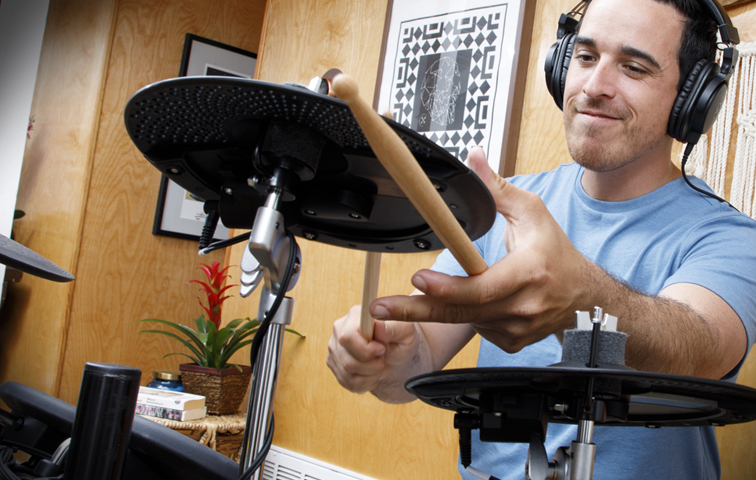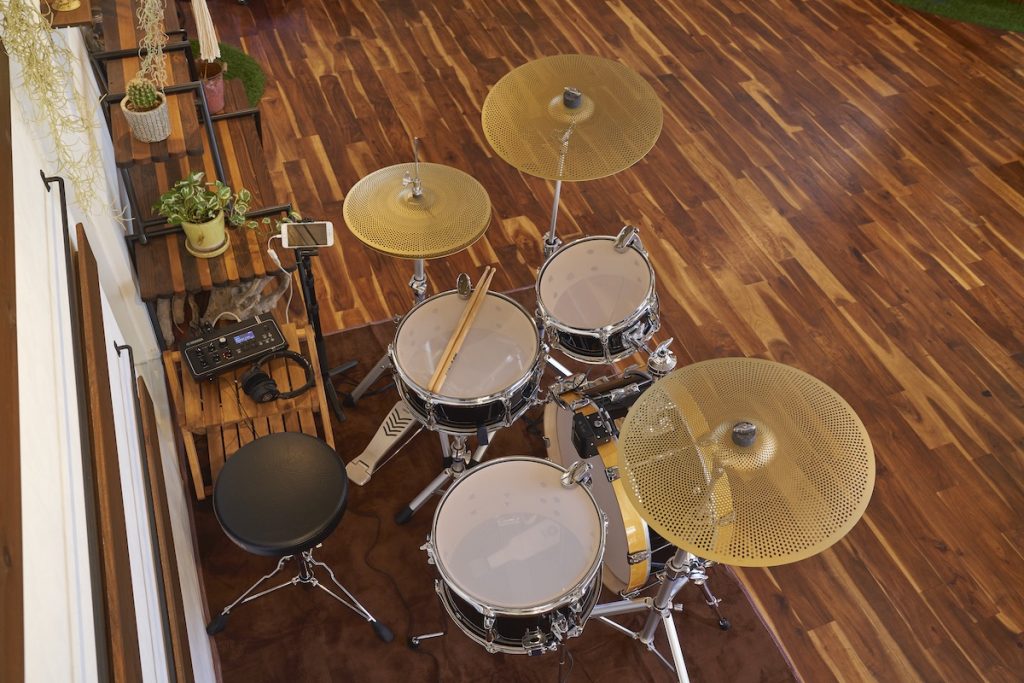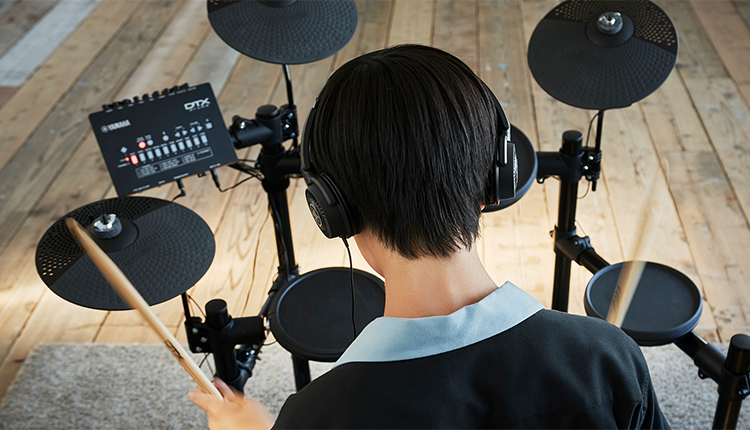Yamaha Finger Drums 101
Easy to pick up, impossible to put down.
Some of the first known musical instruments, dating back to prehistoric times, were objects struck by hands and fingers to enhance story-telling through use of rhythm and melody. Since the introduction of castanets (over 3,000 years ago) and finger cymbals (over 1,000 years ago), finger drumming has come a very long way and has taken some huge leaps, most of which happened in the past 40 years.

Acoustic percussive instruments that incorporate some level of finger dexterity, such as congas, djembes, tablas and cajons, have long been a part of music, with electronic hand-controlled drum devices first appearing in the mid-1960s. MIDI drum pad controllers made their debut in the 1980s, but the 1990s and early 2000s saw an explosion of these devices as DJs and musicians began using them extensively in the hip-hop, R&B and Electronic Dance Music (EDM) scenes.
Today, drum pads and other beat-making devices played with the fingers are a part of almost every musical genre. The number of these kinds of products available on the market today is staggering, and for someone looking to get into finger drumming it can be a very daunting world to jump into. Many such devices are either complicated to use or require the purchase of additional products (such as a computer, speakers, and, in some cases, additional sounds), and those that are all-in-one — meaning they have built in speakers and preloaded sounds — tend to cost a lot of money.
Until now.
Enter the FGDP
The recently released Yamaha FGDP finger drum pads includes the FGDP-30 and FGDP-50 models, each of which provides standalone all-in-one solutions in a very affordable package. Let’s take a deep dive into these unique instruments.
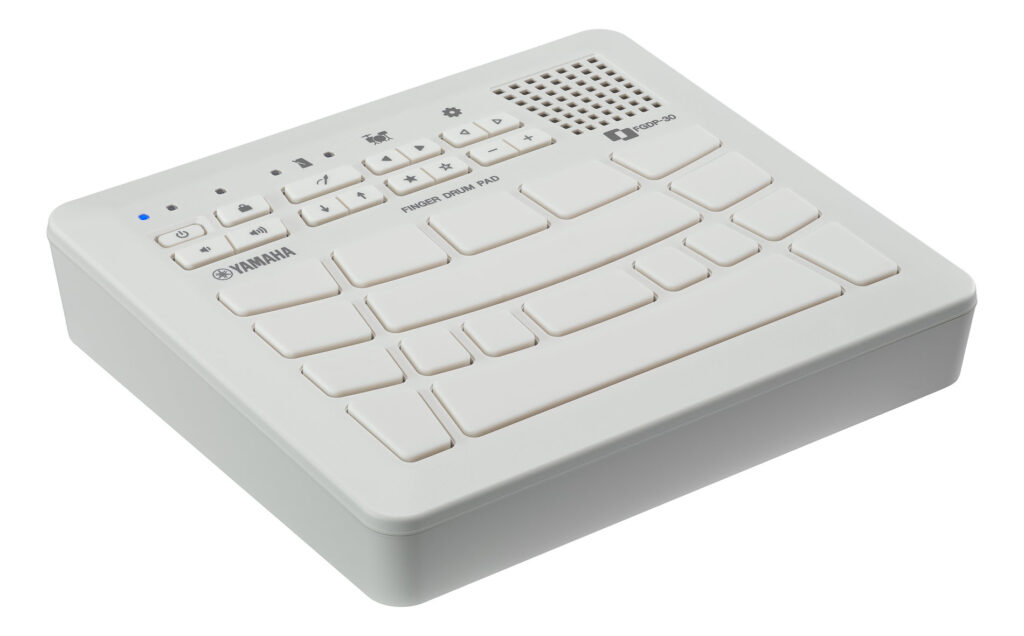
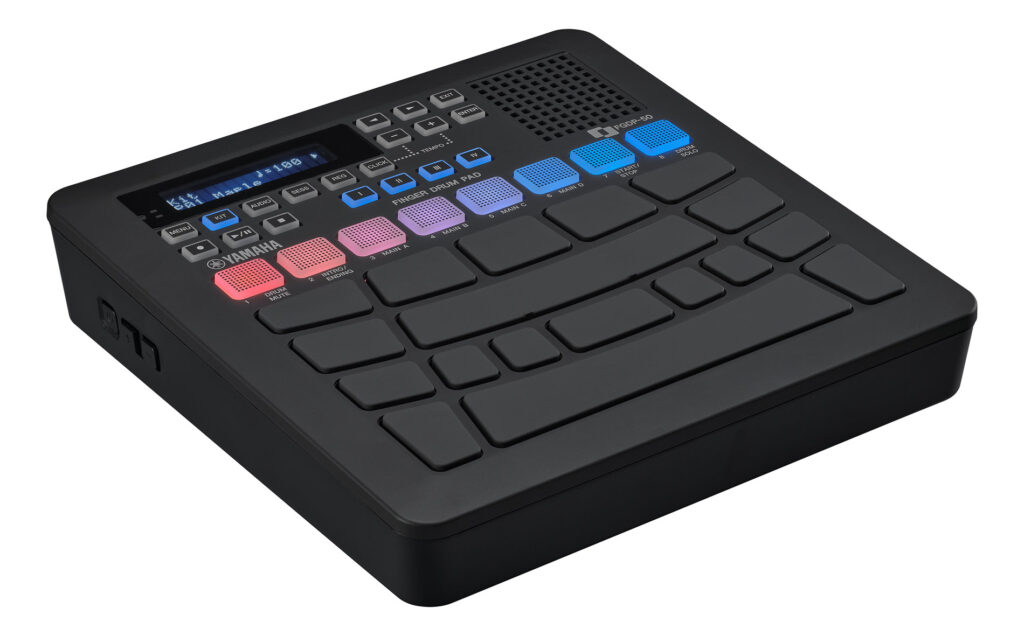
Key Features
Both FGDP models are extremely portable and lightweight. Even the larger FGDP-50 measures in at just 8.77″ x 8.77″ x 2″ h (223 × 223 × 51 mm), meaning it can easily fit in a backpack or small bag. Both models have built-in speakers and a headphone jack, so there is no need to purchase an additional sound system. In addition, a rechargeable battery provides up to three hours of nonstop untethered playing, allowing you to take the FGDP anywhere and play it anytime you want, without worrying about where to plug it in.
To make these devices even more self-contained, they come with dozens of preset kits (39 in the FGDP-30 and 48 in the FGDP-50), so you can start playing right out of the box without having to purchase or download any sounds. These kits are configured using the 1,500 Voices (sounds) built into FGDP-50 or 1,212 Voices built into the FGDP-30; the Voices are a mixture of recordings of actual Yamaha acoustic drum sets, electronic sounds developed for Yamaha DTX Series e-drums, and additional sounds created exclusively for the FGDP.
Both the FGDP-50 and FGDP-30 are compatible with the free Yamaha Rec’N’Share app so you can play along with your favorite songs, record your sessions, and share your performance with your friends and/or on your social channels.
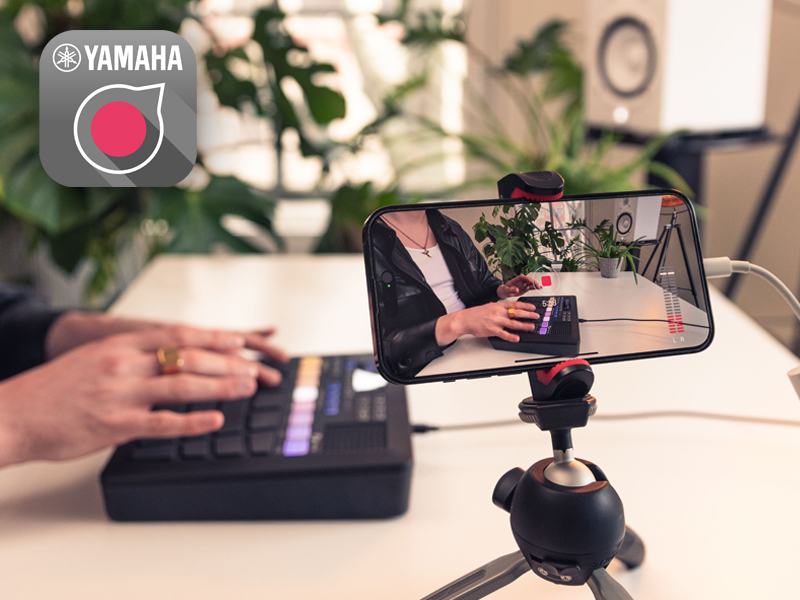
There are also several advanced features that are only available with the FGDP-50. For example, while both offer USB ports, the FGDP-50 also has a Host to micro-USB terminal that allows you to import up to 100 of your own sounds and samples — even stereo ones such as complete musical phrases. Samples can be as long as 600 seconds if mono (300 seconds if stereo). This same port also allows for the transmission and reception of MIDI message to or from a PC or smart device for recording performances in a DAW.
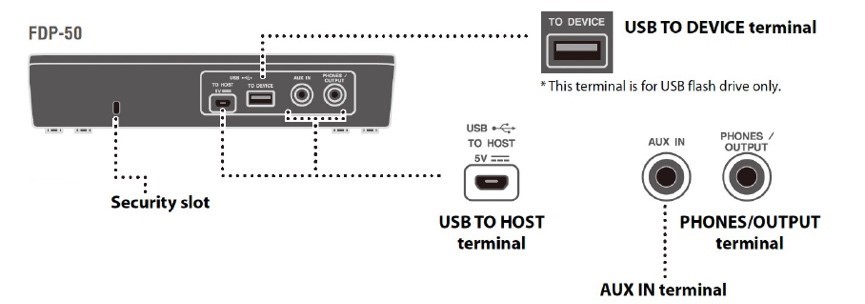
Another feature unique to the FGDP-50 is the ability to assign Note Repeat to pads. This enables more dynamic playing and allows you to loop a sound, either by holding down the pad or by setting the pad to start and stop the loop on each hit. For instance, say you want to set a hi-hat to continue playing every quarter note: simply set it to note repeat and it will continue to play the hi-hat sound (synced to the BPM of the onboard metronome), freeing your fingers to play other pads while the hi-hat continues to play until you press the pad a second time. You can also add Humanize features to this, which creates subtle variations in terms of how quickly the note is played and how loud or soft it is played, making your beats sound more natural and less computer-generated.
The FGDP-50 also allows you to save more user kits and call them up with the touch of a button. These “Registrations” (four on the FGDP-50 vs. two on the FGDP-30) save preferences, pad settings, custom-built kits and any changes you make to voices, such as tuning, adding effects, reverb, chorus and more.
A Better Way to Play
In addition to all these great features, FGDP finger drums are also extremely easy to use, thanks to their unique advanced ergonomic design. Yamaha engineers began by studying what comes naturally to a percussionist’s hands when playing. For example, it was found that most finger drummers place the hi-hat and ride cymbal sounds on the top row, so that they can be accessed by the middle and ring fingers. The snare is commonly played with the pointer finger, so the snare pads were usually placed directly in the middle, and the bass, most often played by the thumb, was placed at the bottom.

Accordingly, all the FGDP pads were configured that way, though breaking from the industry standard grid shape (something that does not feel natural to many users when playing) and instead placed in a more intuitive curved position, enabling more fluidity and less pecking when playing.
The FGDP pads are also ultra-sensitive and highly responsive, allowing you to create more expressive drum beats that include things like flams and ghost notes, and to place accents on notes when desired. Because you can assign any sound to any pad, you can configure the FGDP in a way that works best for you. Some of the default settings even have multiple “mirrored” pads with the same sounds assigned, so you can perform incredibly fast drum rolls and fills without loss of control, and while avoiding something known as “machine gunning” — the term for when a drum roll is played quickly on an electronic drum set and the notes all come out at the same volume, thus sounding like a machine gun.
In short, these great new products have everything you need, bringing the world of finger drumming to established and aspiring musicians alike with a slew of unique, accessible and easy-to-use features … and at a cost that is within reach. Check out the video below for more information.










